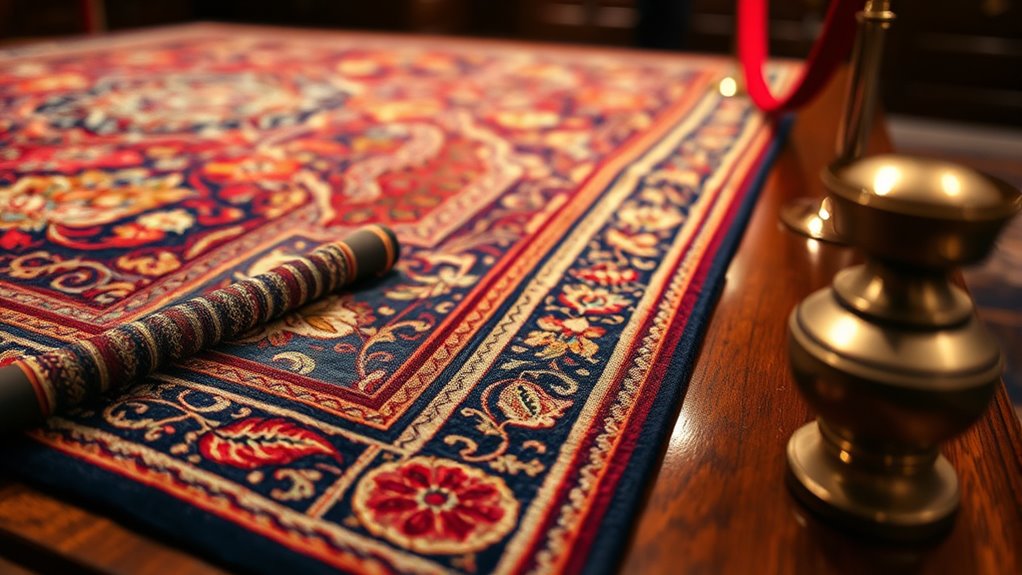When bidding on high-end rugs, auction reserves set a minimum price the seller will accept, protecting against undervaluation. Sellers can reveal or conceal the reserve to influence bidding, and setting the right amount affects how buyers bid. If the reserve isn’t met, the rug won’t sell. Understanding how reserves work helps you make smarter bids and avoid surprises. Keep going to discover more tips on steering reserve strategies effectively.
Key Takeaways
- Reserve prices set a minimum acceptable bid, ensuring high-end rugs aren’t sold below their value.
- Concealed reserves encourage bidders to increase offers without knowing the minimum, boosting final prices.
- Revealed reserves can deter low bids but may discourage participation if set too high.
- Setting an appropriate reserve involves analyzing market value and recent auction results.
- Bidders should recognize signals of reserves to avoid overbidding and make informed decisions.
The Purpose Behind Setting a Reserve Price
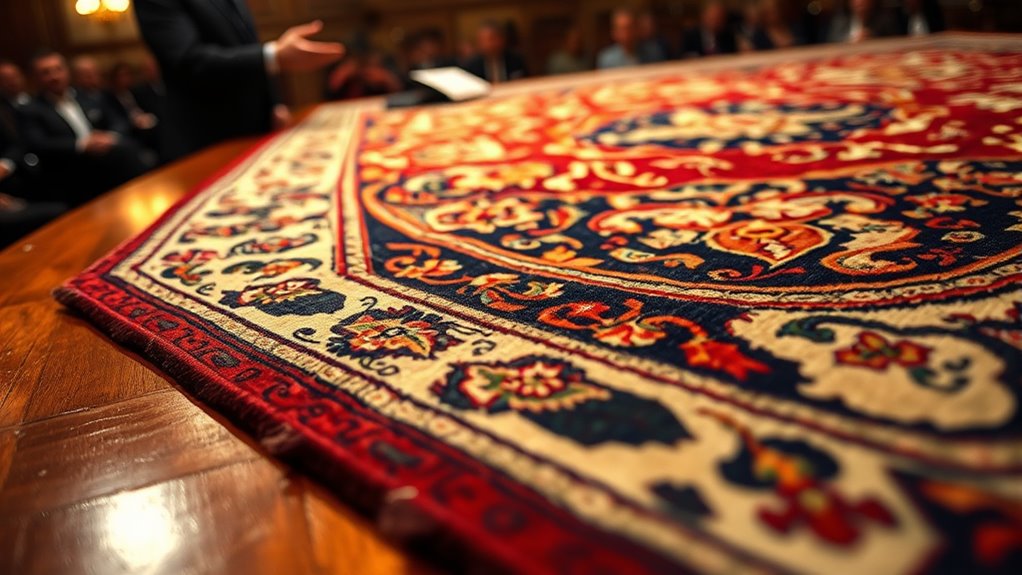
Setting a reserve price is essential because it guarantees the seller doesn’t have to accept a bid lower than their minimum acceptable amount. This reserve price acts as a safeguard, ensuring you don’t sell your high-end rug for less than its worth. When you establish a reserve, you shape your bidding strategy, signaling to potential buyers that there’s a minimum they must meet. It helps filter out low offers and attracts serious bidders who recognize the value of your piece. Without a reserve, you risk ending the auction with a price too low, which can be disappointing. By carefully setting your reserve, you maintain control over the final sale price, aligning the auction outcome with your expectations and ensuring a fair deal for your valuable rug. Additionally, understanding market valuation can help you gauge the market value and set a realistic reserve price. Knowing the contrast ratio of your rug’s market worth can further refine your reserve to match current demand and quality standards. Moreover, considering market fluctuations can assist in adjusting your reserve appropriately over time to reflect changing conditions, which is particularly important given the economic factors influencing high-end collectibles.
How Reserve Prices Influence Bidding Strategies
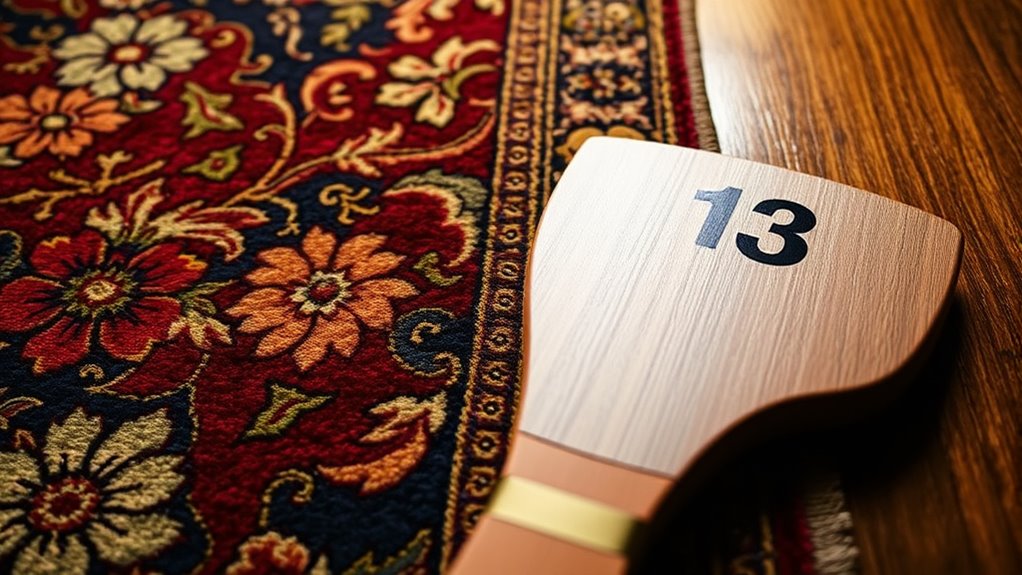
Reserve prices considerably shape how bidders approach your auction. They influence bidding psychology by signaling the minimum acceptable price, which can either encourage or discourage participation. When bidders see a high reserve, they might hold back, fearing they won’t meet it, or they may be motivated to bid more aggressively during reserve negotiation. Conversely, a low reserve can stimulate spirited bidding, but it might also attract less serious bidders. Understanding this dynamic helps you set a reserve that balances your valuation with bidder behavior. The key is to craft a reserve that neither discourages participation nor undervalues your rug. Effective reserve strategies can drive competitive bidding, ultimately increasing your final sale price. Always consider how reserve prices will influence bidder psychology and bidding tactics. Additionally, being aware of cybersecurity vulnerabilities associated with online auctions ensures your transaction remains secure and trustworthy. Implementing secure online platforms can further protect your auction from potential threats and fraud. Recognizing the importance of auction regulations can also help you avoid legal complications and ensure a smooth selling process. Moreover, understanding home security systems can help you safeguard your property and valuables during the auction process.
The Process of Revealing or Concealing Reserves During Auctions
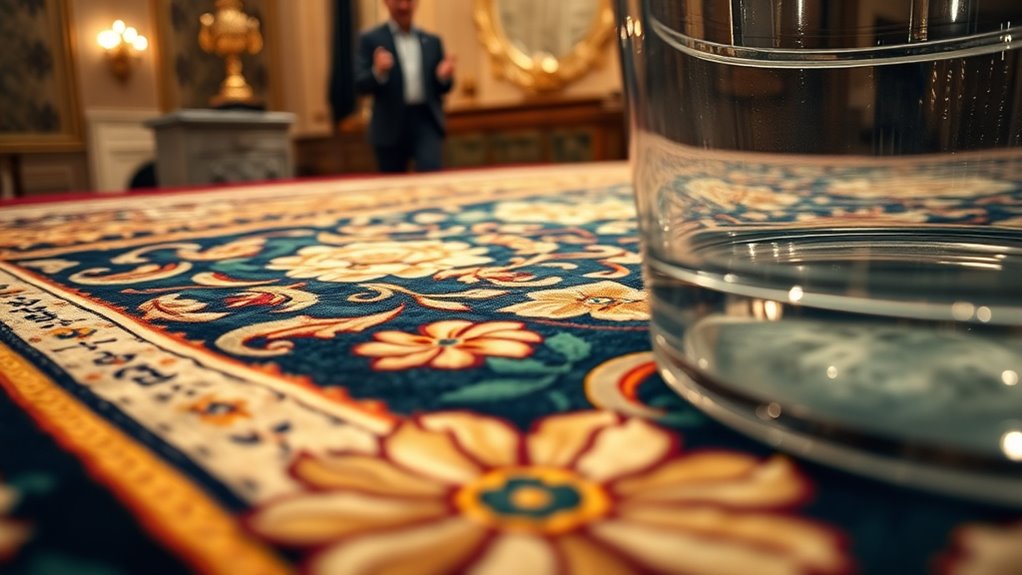
Deciding whether to reveal or conceal your reserve price can considerably impact the auction’s momentum. With reserve concealment, you keep bidders guessing, potentially encouraging more aggressive bidding and bid escalation. When bidders aren’t aware of the reserve, they may push higher to secure the rug, believing the reserve might be low. Conversely, revealing your reserve can deter low offers and prevent bid escalation from buyers who see the minimum as too high. The process involves carefully choosing when to disclose the reserve—some auction houses reveal it after bidding has peaked, while others keep it hidden until the final moments. This strategic decision can influence bidding behavior, either fueling competitive bid escalation or calming the auction’s pace, depending on your goals. Additionally, understanding vetted auction practices can help you make informed decisions about reserve strategies to maximize your results. Knowing the auction process and how reserves are typically managed can further enhance your approach and outcomes. Incorporating insights from home improvement strategies, such as managing expectations and timing, can also be beneficial in planning your reserve disclosures. For high-end rugs, considering the safety of electric heated mattress pads as an analogy, it’s important to ensure your reserve is set with the right safety margins to avoid surprises and optimize the final sale price. Moreover, being aware of regulatory compliance in auction settings can help prevent legal issues related to reserve disclosures.
Tactics Sellers Use When Determining Reserves for High-End Rugs
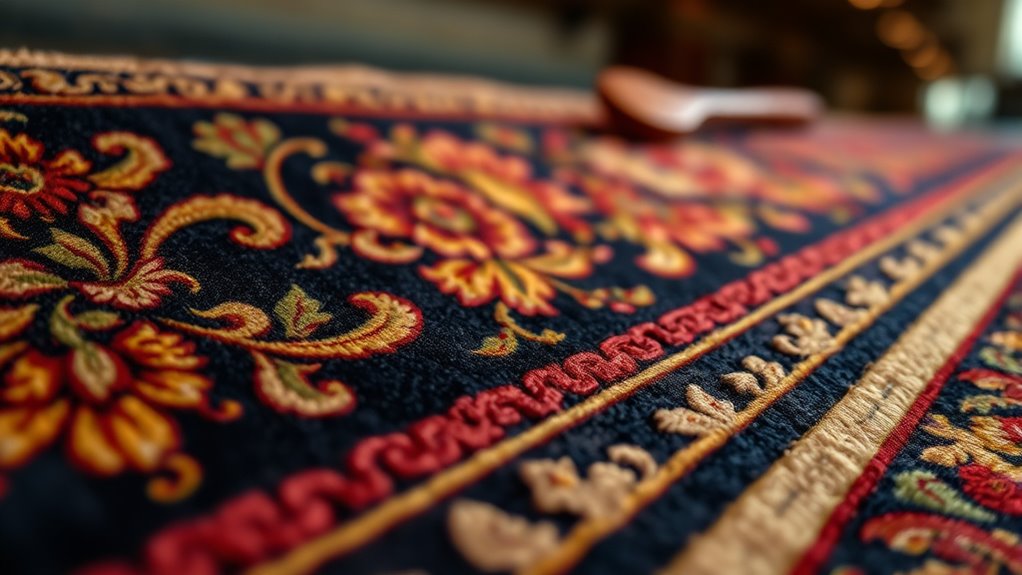
When determining the reserve price for high-end rugs, sellers often employ strategic tactics to maximize their outcomes. They carefully analyze market value, recent auction results, and the rug’s rarity to set a competitive reserve pricing that attracts serious bidders without undervaluing the piece. Sellers may also adjust reserves based on the anticipated bidding tactics, such as starting with a lower reserve to encourage early interest or setting a firm reserve to signal confidence. Some sellers choose to conceal the reserve to prevent bidders from anchoring their bids too low, prompting more aggressive bidding. Additionally, understanding Halloween and its associated traditions can influence the timing and presentation of the auction, potentially attracting more bidders. Properly timing the auction to align with market trends can further enhance bidding activity. For example, scheduling auctions during peak seasonal demand periods can lead to increased bidder participation. Recognizing diverse personality types of bidders can also help sellers tailor their approach to foster a competitive environment. Overall, these tactics help sellers balance the goal of achieving a high sale price while avoiding underselling their valuable rugs.
What Buyers Should Know When Bidding on Rugs With Reserves
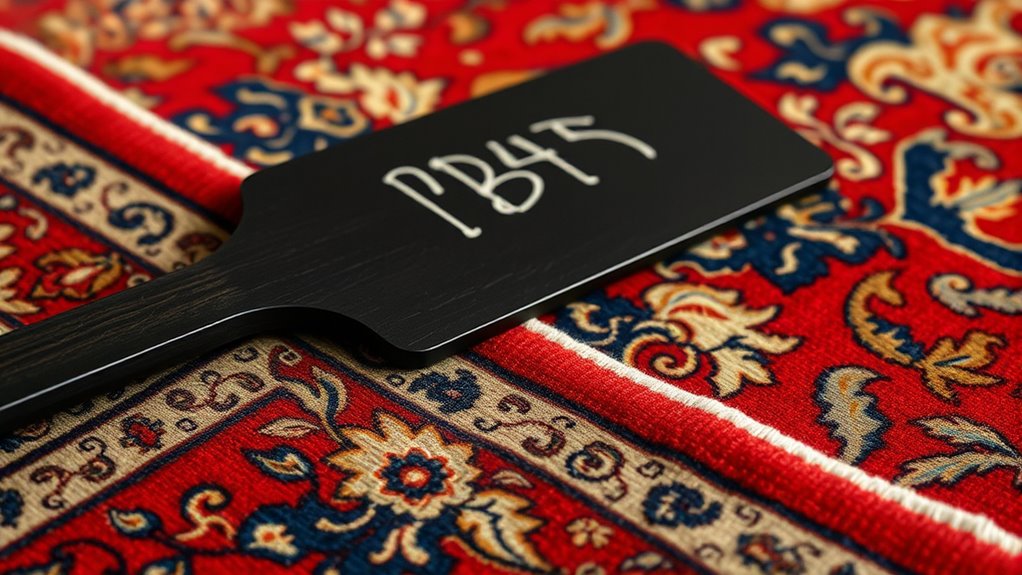
Understanding how reserves work is essential when bidding on high-end rugs, especially since the seller has a minimum price in mind that must be met for the sale to proceed. In the art market, reserves protect sellers’ pricing strategies, but they can also influence your bidding tactics. Before bidding, research the rug’s estimated value and set a maximum bid to avoid overpaying if the reserve isn’t met. Watch for signals from auctioneers indicating whether a rug has a reserve, as this can impact your chances of winning. Keep in mind that if your bid doesn’t meet the reserve, you won’t win the rug, regardless of how high you bid. Knowing this helps you make smarter decisions and stay within your budget during the auction.
Frequently Asked Questions
How Do Auction Houses Verify the Authenticity of High-End Rugs?
When you ask about how auction houses verify the authenticity of high-end rugs, they use thorough authenticity verification processes. They rely on expert appraisers skilled in valuation methods, examining rug materials, craftsmanship, and origin details. These professionals compare the rug’s features with known patterns and historical records, confirming its legitimacy. This careful process helps protect buyers and ensures that only genuine, high-quality rugs reach the auction block.
Can Reserve Prices Be Negotiated Before the Auction Begins?
Like a chess game, reserve price negotiations can be a strategic move before the auction begins. You can often engage in pre-auction reserve setting, where sellers and auction houses discuss and potentially adjust reserve prices. While some houses are flexible, others prefer to keep reserves firm to protect their interests. It’s best to communicate early, as reserve price negotiations vary depending on the auction house’s policies and the value of the rug.
What Are Common Reasons a Seller Might Set a High Reserve?
You might wonder why sellers set high reserves. Typically, they do so to reflect their market valuation and demonstrate seller confidence in the rug’s worth. By setting a high reserve, they aim to guarantee the rug doesn’t sell below their desired price, especially if they believe its value is higher than current market trends. This strategy helps protect their investment and aligns the sale with their expectations.
How Does the Timing of Reserve Announcements Affect Bidding?
Many experts believe that announcing your reserve early can slow auction pacing and impact bidder psychology negatively. When you reveal the reserve too soon, bidders might hold back or become discouraged, fearing the lot won’t meet your minimum. Conversely, late announcements can build suspense, encouraging more aggressive bidding. You need to carefully time reserve disclosures to keep the energy high and maintain bidder engagement throughout the auction.
Are There Risks for Buyers When Bidding on Rugs With Hidden Reserves?
When bidding on rugs with hidden reserves, you face risks due to limited reserve transparency. You might bid confidently, only to learn your bid didn’t meet the secret reserve, causing disappointment or missed opportunities. To protect yourself, develop a strong bidding strategy that considers the possibility of hidden reserves and research the auction house’s practices. Being aware of these risks helps you make smarter bids and avoid surprises.
Conclusion
Understanding reserve prices is like steering a delicate dance—you need to know when to lead and when to follow. By grasping how reserves influence bidding strategies and what sellers aim for, you can approach high-end rug auctions with confidence. Remember, reserves are the hidden currents beneath the surface—knowing them helps you stay afloat and make smarter bids. Stay informed, and let your bidding journey be a tapestry woven with insight and strategy.
